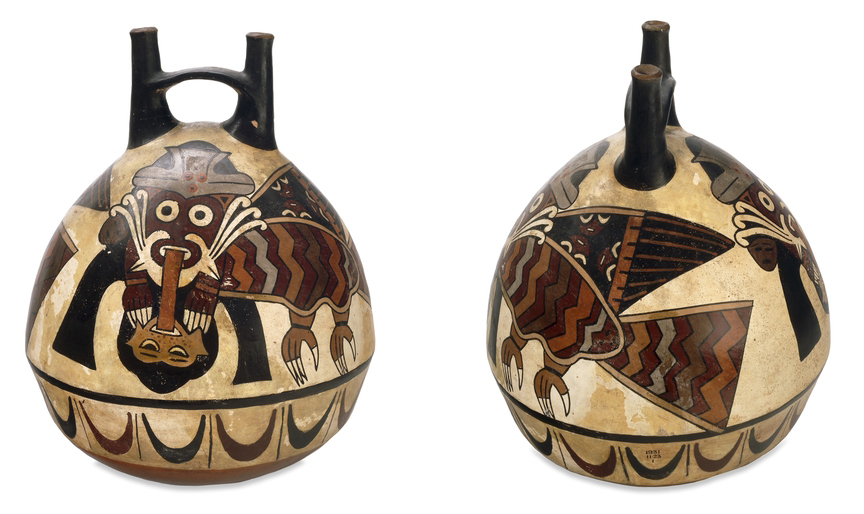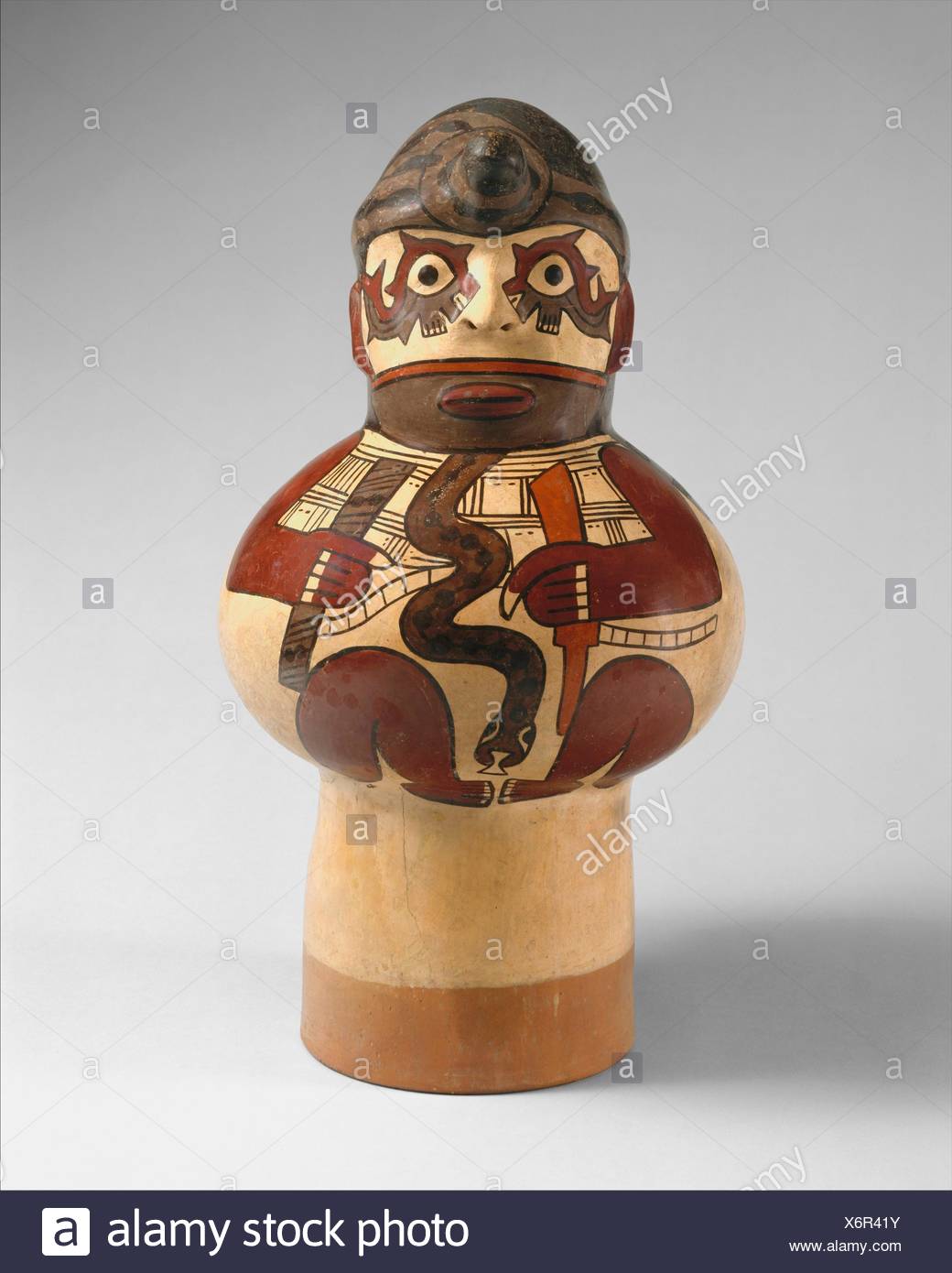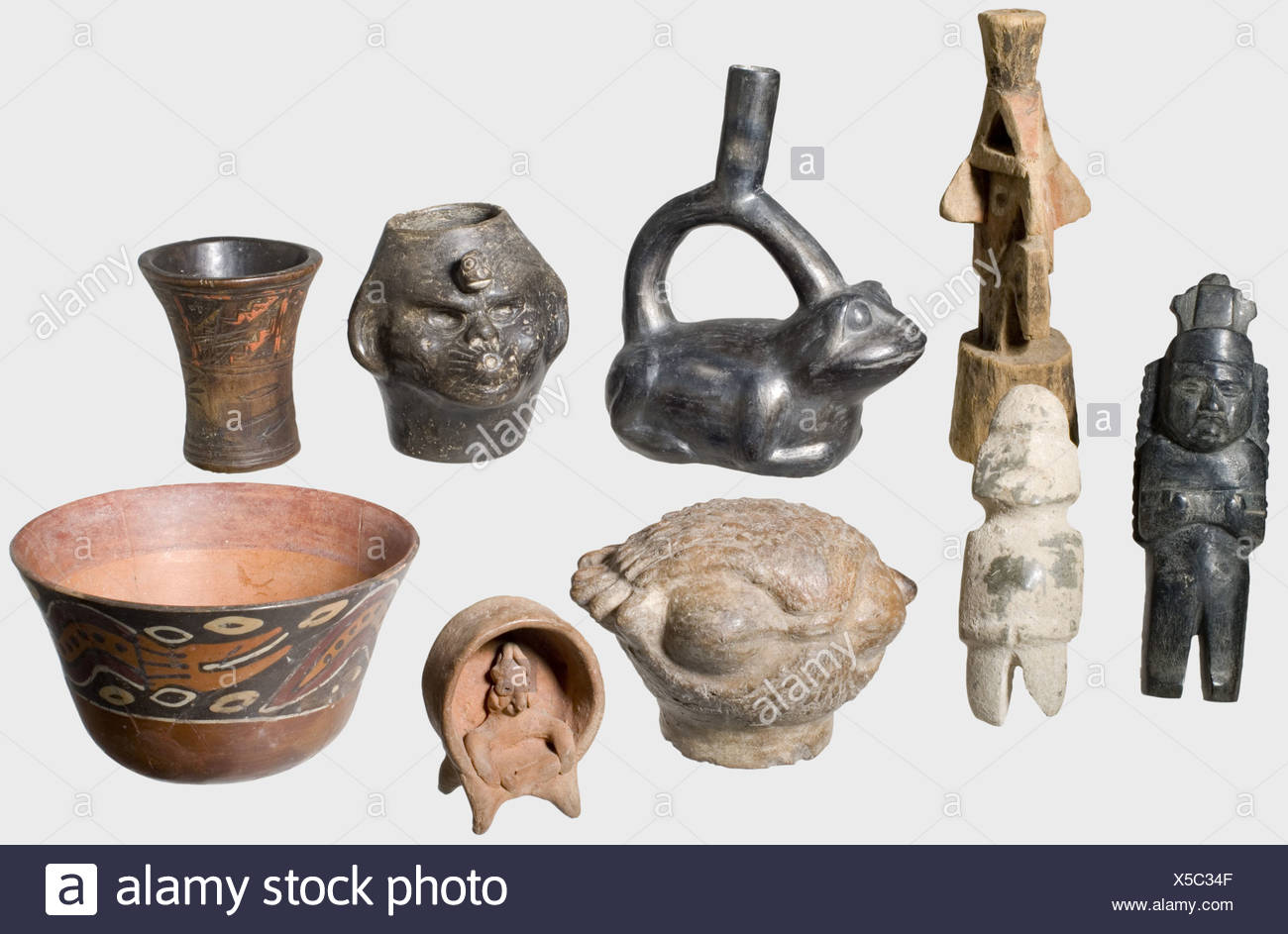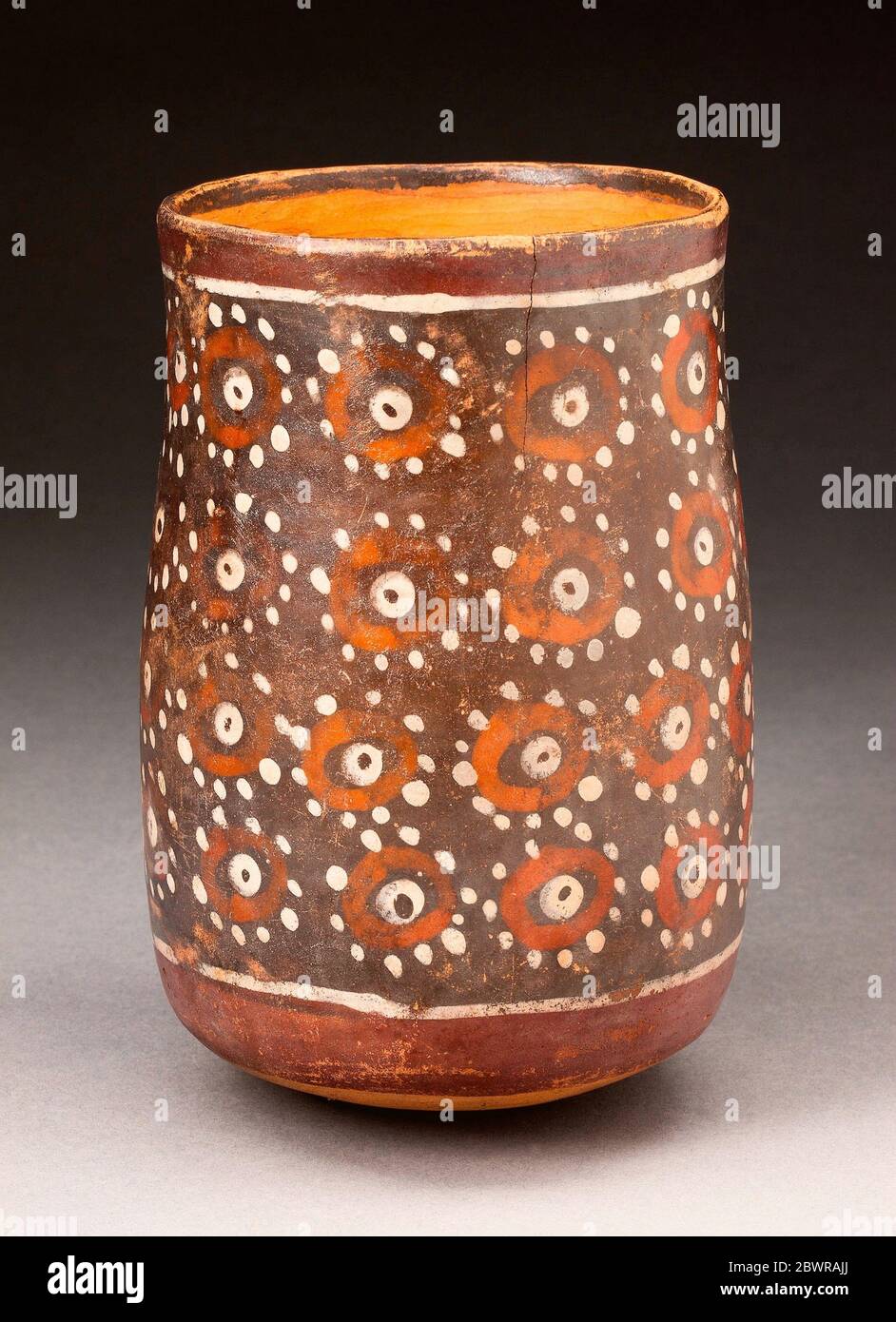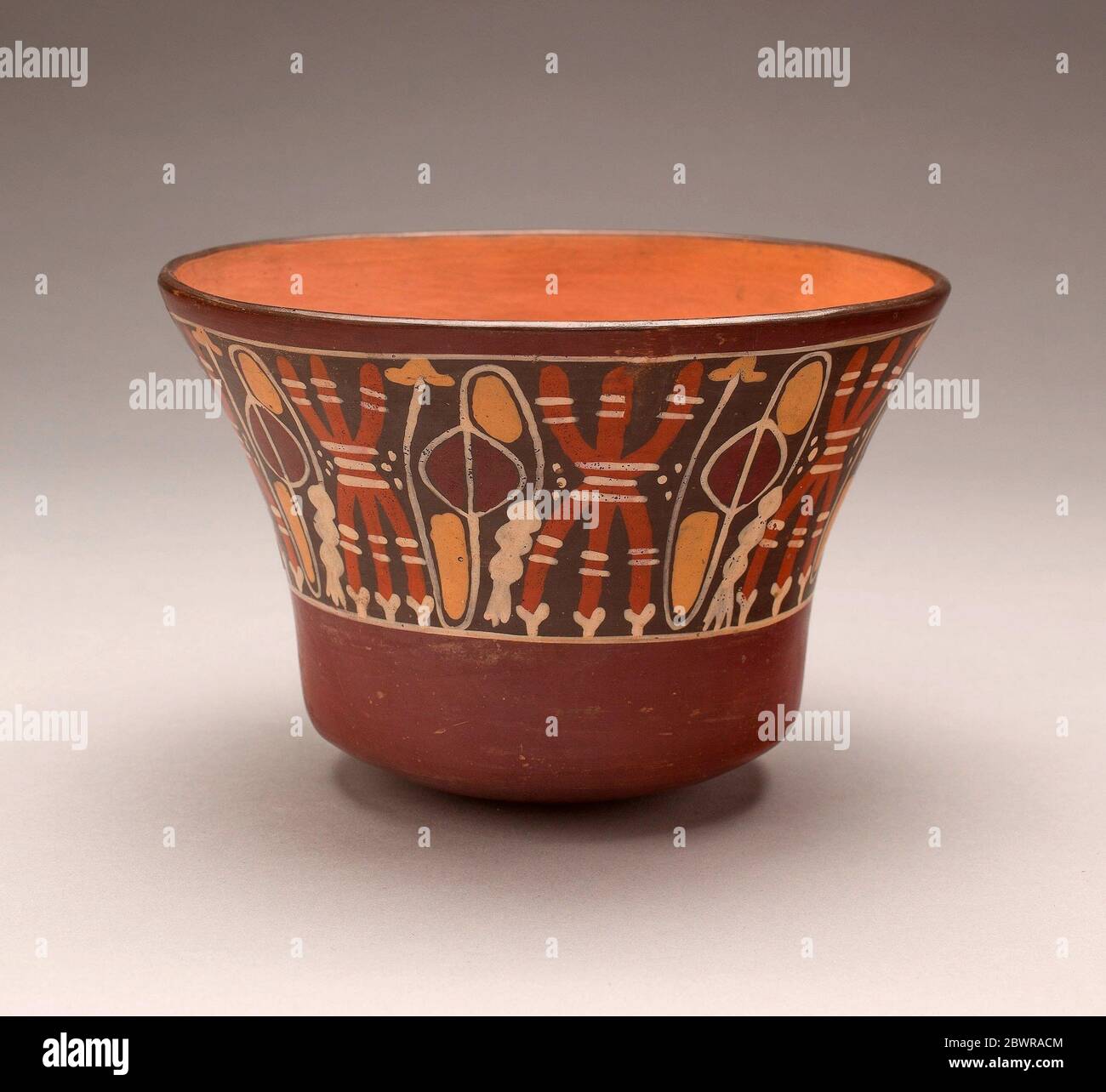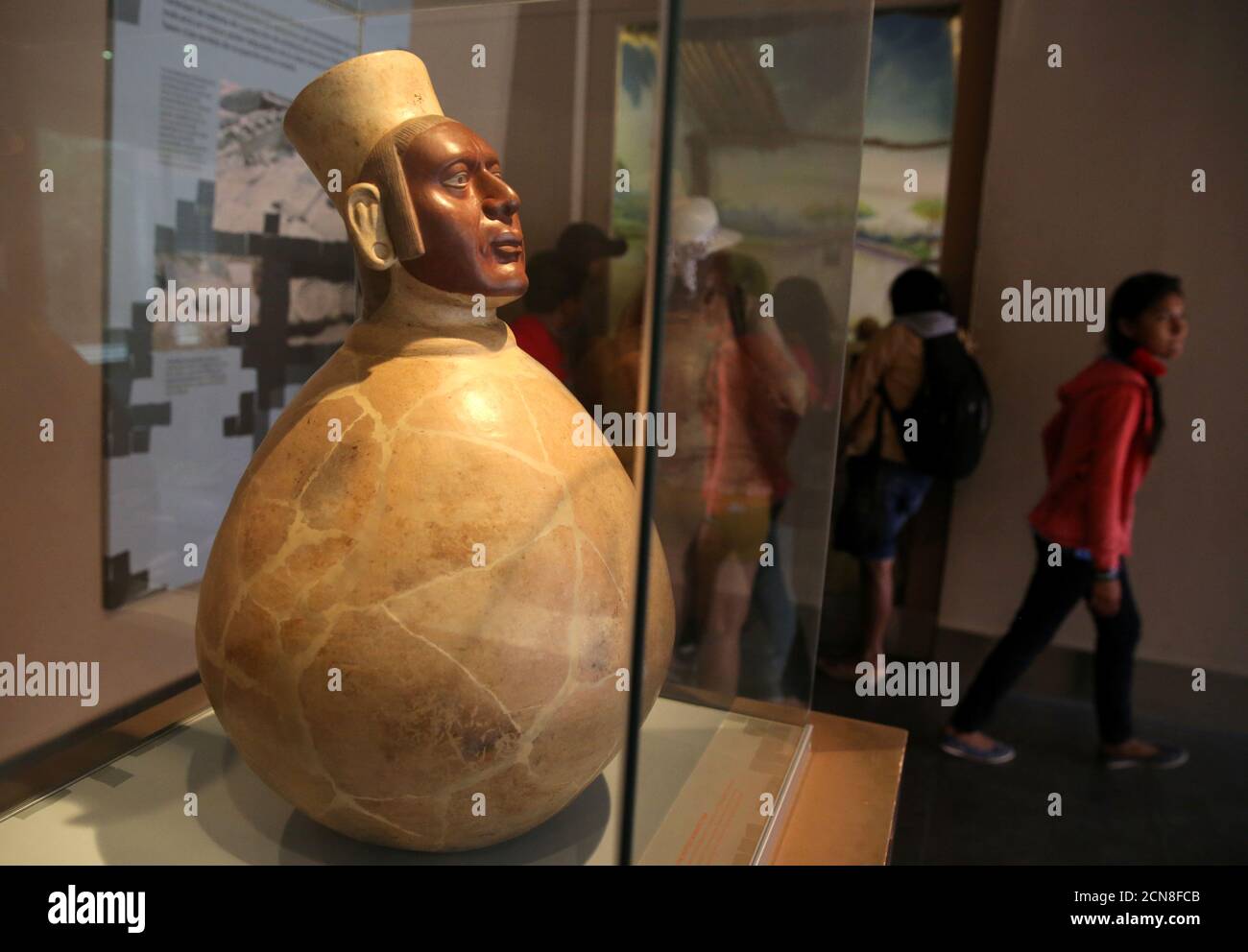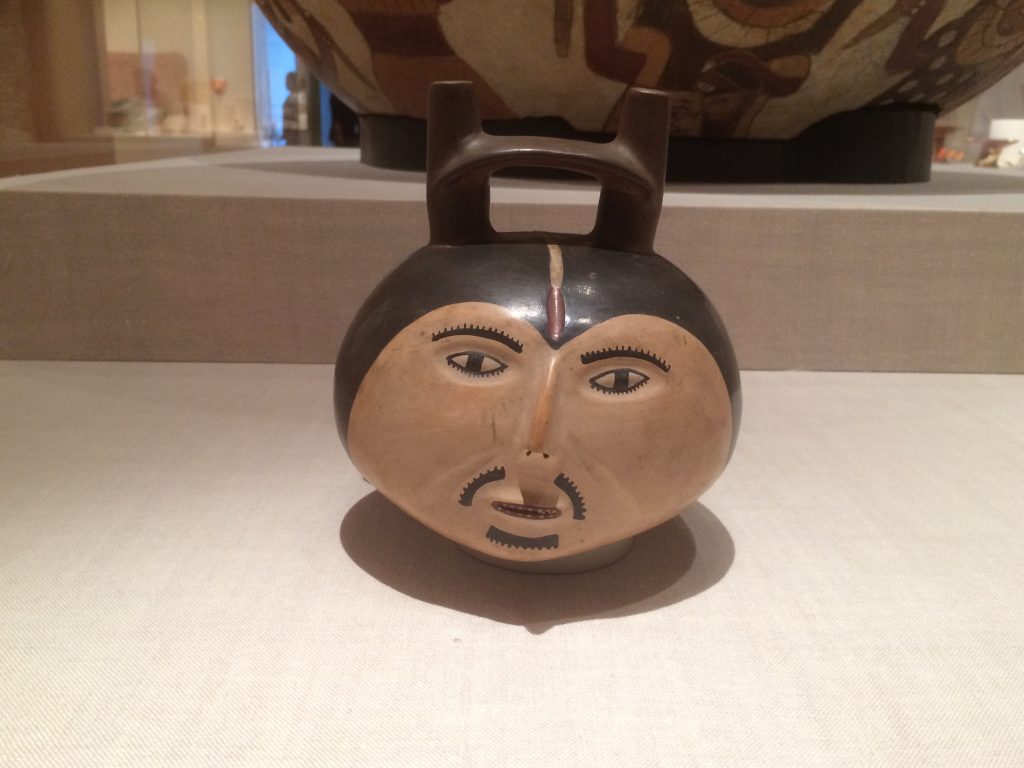Ceramic drums with central bulging sounding chambers were made in southern peru at the turn of the first millennium.
Ceramic drum ancient peru nasca culture 1st century 18 inches high.
Paracas culture 400 b c 200 a d ancient peru.
They settled in the nazca and other surrounding valleys with their principal religious and urban sites being cahuachi and ventilla respectively.
One characteristic of inca pottery is that it did not portray the human form unlike.
Archeological investigations lead us to believe that musical instruments in nazca culture such as this drum were primarily ritual objects used for worship during group gatherings at the ceremonial center of.
When played the drum was held upside down between he drummers legs.
They were surfaced with the many rich colors commonly used on nasca ceramic vessels.
Lines are a mark made by a moving point or a series of connected dots.
Among the most elaborately finished are those of nasca style.
This ceramic artifact is an ancient drum from the southern andean region in what is now modern day peru.
Ceramic drum ancient peru nasca culture 1st century 18 inches high the ceramic drum is an interesting piece.
The paracas culture developed during the period denominated the early horizon.
Ancient peru was the seat of several prominent andean civilizations most notably that of the incas whose empire was captured by the spanish conquistadors in 1533.
The culture is noted for its distinctive pottery and textiles and perhaps above all for the geoglyphs made on the desert floor commonly known as nazca lines.
To 650 a d and was centered in the ica and nasca valleys of south coastal peru fig.
This ease of identification is no doubt because in a culture.
Endlessly inventive both in form and in its use of strong colours and bold decorative designs the ceramic wares of the nazca are instantly recognisable.
This drum is made up of many lines.
The nasca culture emerged during the early intermediate period 100 b c.
Dating from the 1st century ad this drum was produced by the nazca culture.
During the reign of the inca s the production of pottery in the andes was an art that had already developed in the region for thousands of years.
It was discovered by the archaeologist julio c.
These types of drums were common in this culture as they were used for burials.
The pottery of the nazca civilization which flourished in ancient peru between 200 bce and 600 ce is amongst the most distinctive art produced by any civilization from antiquity.


